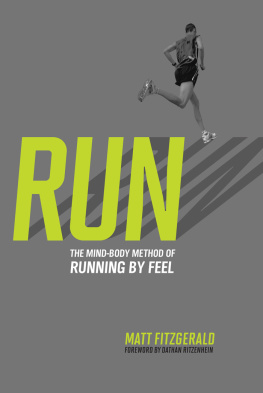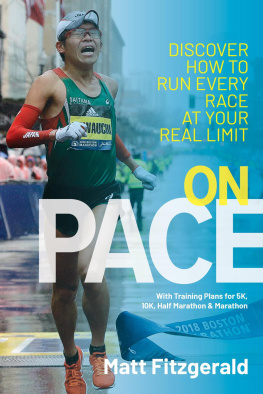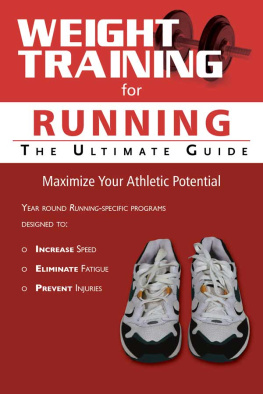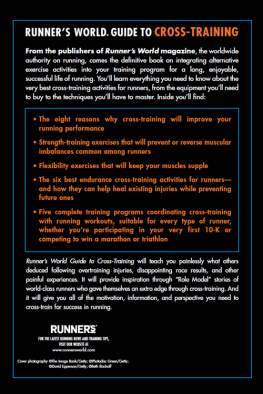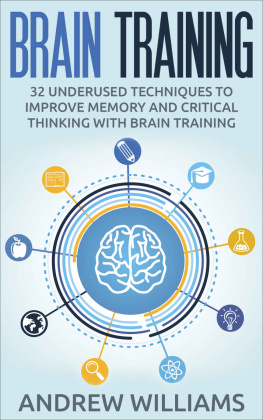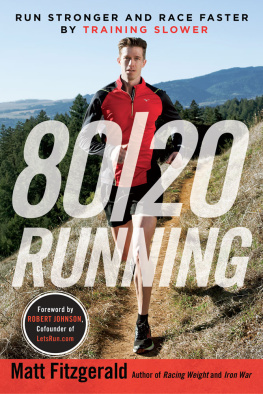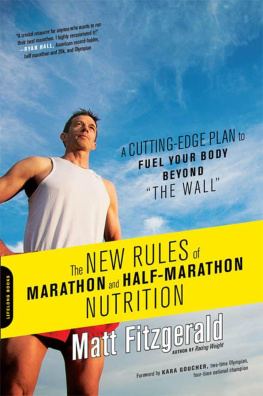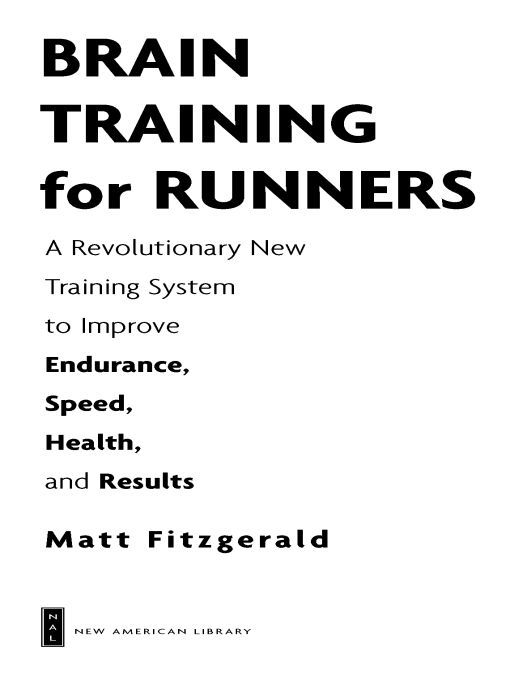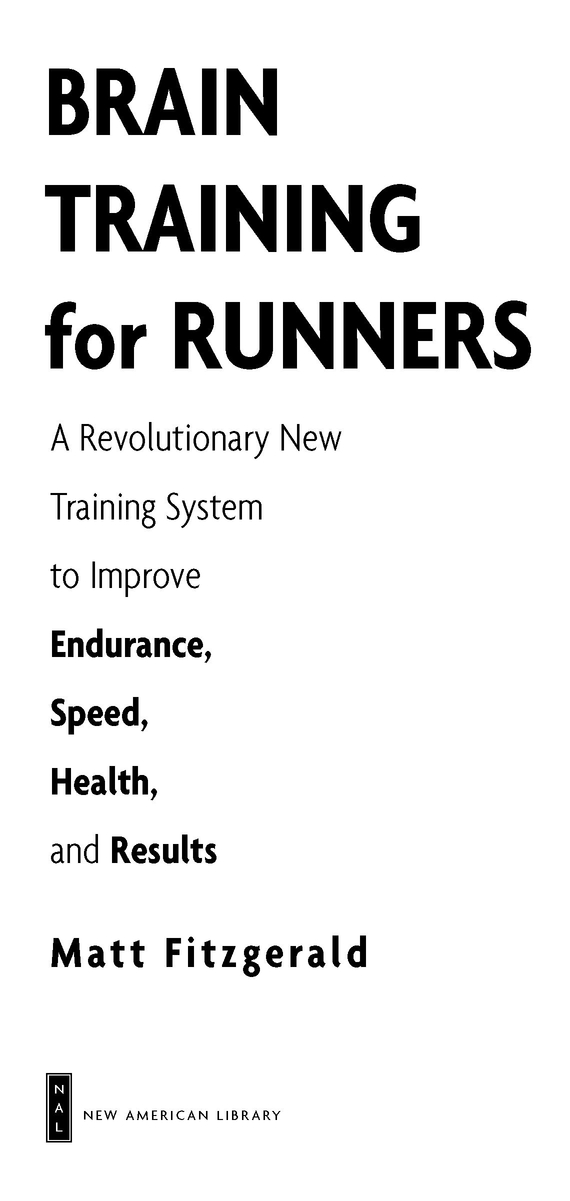Table of Contents
FOREWORD
There was a time, not so long ago, when we really did know everything about human exercise physiology. After all, it was all so very simple. The heart, you see, is the reason why we become tired during exercise. For the heart was designed so that it does not have quite enough capacity to supply our hungry muscles with all the oxygen they require when running at very fast speeds.
For when we attempt to run as fast as we can for as long as possible, the heart is unable to keep up. So the blood and oxygen supply to the muscles is too little; as a result the muscles develop an oxygen deficit, becoming anaerobic. In this state, instead of producing energy only from oxygen-requiring (aerobic) sources, the exercising muscles must turn to their short-term savior, lactic acid, which can be produced in the absence of oxygen, that is, anaerobically. But according to a theory first proposed between 1907 and 1924, this can only ever be a short-term solution. For the lactic acid so produced is the ultimate cellular poison. So as the muscle cells become increasingly anaerobic, their lactic acid concentrations increase, leading ultimately to exhaustion. Since the basis for this fatigue is centered in the muscles rather than the brain, it has been called peripheral fatigue.
But there are two additional components crucial to this explanation. First, the end result is always a catastrophic failure of muscle function. Second, this outcome occurs in the absence of any intervention by the brain. Thus the brain has no capacity to anticipate what will happen in the future and so to act in a timely manner to forestall that catastrophe.
This model of catastrophic peripheral fatigue is also used to explain why we tire when we run for more than an hour or two. Then our exhaustion is not caused by an excess of lactic acid in the exercising muscles but by the opposite: by a lack of sufficient stores of the crucial muscle fuel, glycogen, to supply the muscles energy requirements. Emptied of their most important fuel, the muscles refuse to work, terminating the exercise bout.
According to this model, the outcome of the changes we produce in our bodies with training must be to lessen the impact of these limiting processes. So the heart becomes stronger and better able to pump more blood to the muscles; the network of blood vessels in the muscles expands to hasten the delivery of oxygen from the blood to the muscle cells. And the intracellular engines, the mitochondria, which produce the energy to power the function of the cells, improve their capacity. As a result, the muscles become less anaerobic during exercise and better able to function at a higher capacity and for a longer time.
The prediction of this explanation, as so clearly identified in this book, is that the only way to improve our running performance is forever to be training at the limit. Only in this way can we maximize these adaptations in our muscles and heart and so lessen the barriers to performance that they pose. For how can we train our hearts and muscles to the maximum other than by always working them to the limit of their capacities?
The first problem with this catastrophic model is that it runs contrary to some fundamental principles in human physiology. For example, in the early 1940s, Dr. Walter Cannon from Harvard University published his seminal work showing that the reason why earthly creatures survive in a variety of different environmental niches is because all have the capacity to sustain internal homeostasis. He described homeostasis as a state of relative constancy of the chemical composition of all the bodily organs. The point, of course, is that the catastrophic model of exercise predicts that whereas human functioning is designed to maintain homeostasis at rest, that control is completely lost during exercise. Indeed the basis for this theory is that fatigue represents a state of homeostatic failure.
In time it was realized that this state of internal homeostasis (at rest) is achieved by the interaction of feed-forward and feedback controls within the body so that all the bodily organs act as a unified whole. The feed-forward component of this control is most usually regulated by the brain, which initiates each response to a new challenge on the basis of what it knows will be required to complete the biological task, whatever that task might be. But once the action is begun, the brain no longer works in isolation. Rather, on a second-by-second basis, the brain received sensory feedback from every organ in the body, each telling the brain how it is faring and what support it might need from the brain and other organs to keep it in homeostasis. On the basis of this feedback, the brain continually modifies its original response to ensure that every part of the body remains in homeostasis.
When it comes to exercise, the principal component of this feed-forward control is the number of muscle fibers that the brain chooses to activate in the exercising muscles. For the speed that the athlete can achieve is principally the result of the number of muscle fibers that the brain chooses to activate for any exercise bout. When fewer fibers are active, the speed is slower; when more are recruited, the athlete speeds up. In the words of Matt Fitzgerald, only the brain can hold the muscles back. Or as might be added: Only the brain can speed up the muscles. But the crucial point is that the more fibers that are activated, the greater will be the risk to homeostasis.
For the more muscle fibers become active, the more blood flow they require; the more oxygen that must be delivered; the faster the rate at which energy must be produced; and the quicker the body produces heat. So the quickest way to quell any of these threats to homeostasis is simply to reduce the number of muscle fibers that are recruited by the brain. This represents a simple and elegant solution that would have been forged in the error-reducing crucible of evolution.
But the more compelling challenge for the traditional model is that it simply cannot explain the obvious. For instance, why do athletes run at different paces during races of different distances? For the lactic-acid-as-poison model predicts that there can only ever be one running pace. So each athlete must begin every race at the same very fast pace until his muscles produce enough lactic acid to poison their function, causing the runner to slow down to a more sustainable pace, just below that at which this poisoning effect becomes marked.
The result is that once this poisoning effect is fully activated, the athlete will have reached his steady state pace, which will be maintained presumably until the muscles encounter their next limiting factor when they become depleted of their crucial glycogen stores. So this explanation predicts that every athlete will only ever have one pace for all races regardless of distance. That pace may indeed be different among different runners, yet for each individual there is only ever one running pace.
It does not require a degree in advanced mathematics to appreciate that all athletes begin races of different distances at different running speeds, such that the longer the racing distance, the slower will be the starting speed. As a result, the much beloved lactic acid model fails to explain that which is the most obvious. Yet there is more.
Perhaps even more compelling is the observation that athletes speed up near the end of races at distances beyond about 1500 meters. This invites the obvious question: How is it possible to speed up near the end of a race when the very reason why the runners pace has been limited in the first part of the race is because the poisoned muscles have been unable to work any harder? If it suddenly becomes possible somehow to overcome this effect when the finish line comes in sight, why was it not possible earlier? And how ever do the muscles or the heart suddenly know that the finish line is in sight so that they can begin the final spurt to the linethe heart by suddenly finding a reserve of blood flow it can direct to the muscles; the muscles by suddenly releasing themselves from the restraining grip of lactic acid? Indeed it would be most interesting to know how the heart and the muscles can sense the proximity of the finish, if not through the function of the eyes and the brain.


